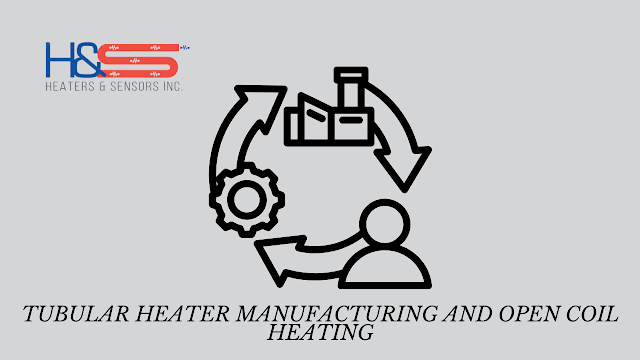Over the years, tubular heater manufacturers have come a long way, totally changing how different industries work with their efficiency and flexibility. We're talking from basic beginnings to super cool innovations! This article dives into that journey and how these heating solutions have become such a big deal in all sorts of applications. And you know what? Tubular heater manufacturers are the real MVPs here.
1. Introduction to Tubular Heater Manufacturing and Open Coil Heating Technology
Tubular heaters and open coil heating elements are essential components in numerous industrial processes, providing controlled heat in applications ranging from food processing to aerospace engineering. These heating technologies play a crucial role in maintaining optimal temperatures, facilitating chemical reactions, and ensuring product quality.
2. Historical Background of Tubular Heater Manufacturing
Early Developments
The roots of tubular heater manufacturing can be traced back to the late 19th century when the demand for efficient heating solutions surged with the Industrial Revolution. Inventors experimented with various materials and designs to develop reliable heating elements capable of withstanding high temperatures and harsh operating conditions.
Industrial Revolution Impact
The Industrial Revolution marked a significant milestone in the evolution of tubular heater manufacturing, with the emergence of mass production techniques and advancements in metallurgy. Tubular heaters became integral components in industrial machinery, powering processes across manufacturing sectors.
3. Evolution of Tubular Heater Manufacturing
Advancements in Materials
Over time, the materials used in tubular heater manufacturing have evolved, allowing for greater efficiency, durability, and customization. Stainless steel, Incoloy, and titanium are among the materials commonly employed, offering resistance to corrosion, oxidation, and mechanical stress.
Automation and Mass Production
The advent of automation has revolutionized tubular heater manufacturing, streamlining production processes and reducing lead times. Computer-controlled machinery enables precise bending, welding, and assembly of heating elements, ensuring consistency and reliability in performance.
4. The Rise of Open Coil Heating Technology
Introduction and Basic Principles
Open coil heating technology, also known as resistance heating, operates on the principle of electrical resistance, where current passing through a resistive wire generates heat. These heating elements consist of tightly wound coils made from alloys such as nichrome, offering high electrical resistance and thermal stability.
Applications Across Industries
Open coil heater find extensive use in applications requiring uniform heating, rapid response times, and precise temperature control. From industrial ovens and kilns to HVAC systems and semiconductor manufacturing, open coil heating technology caters to diverse heating requirements across industries.
5. Integration of Tubular Heater and Open Coil Heating Technology
Collaborative Innovations
In recent years, manufacturers have explored synergies between tubular heaters and open coil heating technology to develop hybrid heating solutions that combine the advantages of both technologies. By integrating tubular heating elements with open coil configurations, engineers have achieved enhanced performance and efficiency in heating systems.
Enhanced Performance and Efficiency
The integration of tubular heaters and open coil heating technology offers several benefits, including improved heat transfer, uniform temperature distribution, and energy efficiency. These hybrid heating solutions provide greater flexibility in design and application, catering to the evolving needs of modern industries.
6. Challenges and Solutions in Tubular Heater Manufacturing and Open Coil Heating Technology
Environmental Concerns
As the focus on environmental sustainability grows, manufacturers face challenges in minimizing the environmental impact of tubular heater manufacturing and open coil heating technology. Strategies such as recycling materials, optimizing energy consumption, and reducing emissions are being implemented to address these concerns.
Regulatory Compliance
Stringent regulations govern the design, production, and installation of heating equipment to ensure safety, reliability, and compliance with industry standards. Manufacturers must stay abreast of regulatory requirements and adopt best practices in quality assurance and quality control to meet regulatory compliance.
7. Future Trends in Tubular Heater Manufacturing and Open Coil Heating Technology
Sustainability Initiatives
The future of tubular heater manufacturing and open coil heating technology lies in sustainable practices and eco-friendly solutions. Innovations in materials recycling, energy-efficient designs, and renewable energy integration are expected to drive sustainability initiatives in the heating industry.
Technological Advancements
Advancements in materials science, automation, and digitalization are poised to shape the future of tubular heater manufacturing and open coil heating technology. Smart heating systems equipped with sensors, actuators, and IoT connectivity will enable real-time monitoring, predictive maintenance, and energy optimization.
Conclusion
The evolution of tubular heater manufacturing and open coil heating technology has revolutionized industrial heating processes, offering efficient, reliable, and versatile solutions for diverse applications. Collaborative innovations, sustainability initiatives, and technological advancements are driving the future growth of the heating industry, ensuring continued progress and innovation.

Comments
Post a Comment